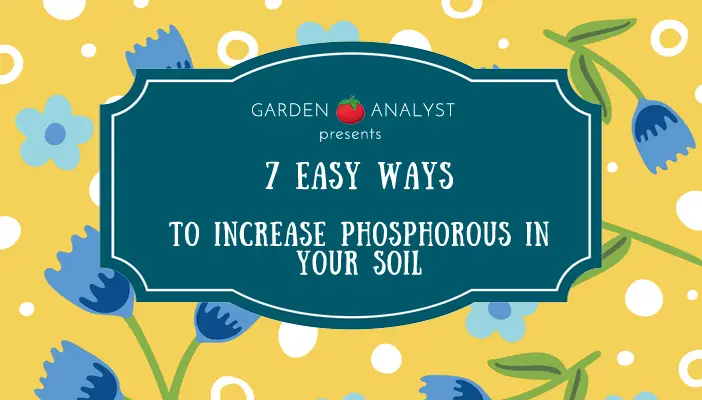Phosphorous is one of the 3 key nutrients required for healthy plant growth. Lack of this element can lead to poor plant productivity and severely limit the yield of your crop. In this article, we will explore ways to increase phosphorous in soil to ensure a healthy and happy garden.

Effects of low Phosphorous levels in your soil
First of all, phosphorous is largely responsible for root growth and the flower and fruit development of your plants. This is one of the building blocks of the NPK fertilizer trio. Ensuring they are at proper levels throughout the growing season are available through organic and synthetic ways.
Therefore, the effects of having a phosphorus deficiency will end up diminishing a crops growth. It is very difficult to identify when there are low levels of phosphorous in your soil, but some telltale signs can be shown in your plants if you keep an eye out. The most typical symptoms are of a phosphorous deficiency are:
- Abnormal discoloration in the leaves – Dark purple pigments or darker greenish/blue coloration along the outer leaves
- Lack of flower maturity and seed development late into the growing season
How to Increase Phosphorus Levels In The Soil Organically
Luckily, there are plenty of options for amending your soil with phosphorous, and they are all relatively easy to find. The most effective methods of adding phosphorous to your soil include:
- Bone meal – a fast acting source that is made from ground animal bones which is rich in phosphorous.
- Rock phosphate – a slower acting source where the soil needs to convert the rock phosphate into phosphorous that the plants can use.
- Phosphorus Fertilizers – applying a fertilizer with a high phosphorous content in the NPK ratio (example: 10-20-10, 20 being phosphorous percentage)
- Organic compost – adding quality organic compost to your soil will help increase phosphoos content
- Manure – as with compost, manure can be an excellent source of phosphorous for your plants
- Clay soil – introducing clay particles into your soil can help retain & fix phosphorus deficiencies.
- Ensure proper soil pH – having a pH in the 6.0 to 7.0 range has been scientifically proven to have the optimal phosphorus uptake in plants
In conclusion, you can see it’s fairly simple to ensure you have a balanced amount of phosphorous in soil. It is a key macronutrient that cannot be ignored if you want to grow strong and hearty plants and vegetables. As mentioned in other soil articles, the only way to be sure that you have a phosphorus deficiency is to perform a soil test. Soil tests are simple to do and I highly suggest this soil test kit.
If you have any questions about amending your soil with phosphorus nutrients or any other garden questions, feel free to reach out to me in the comments below and I will get back to you ASAP.
Garden Analyst